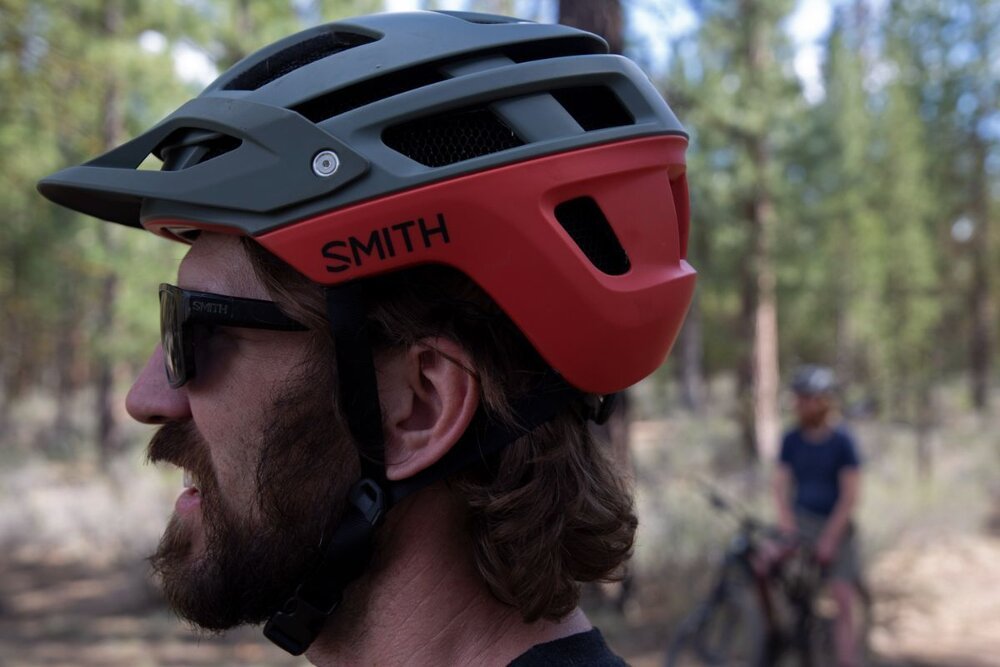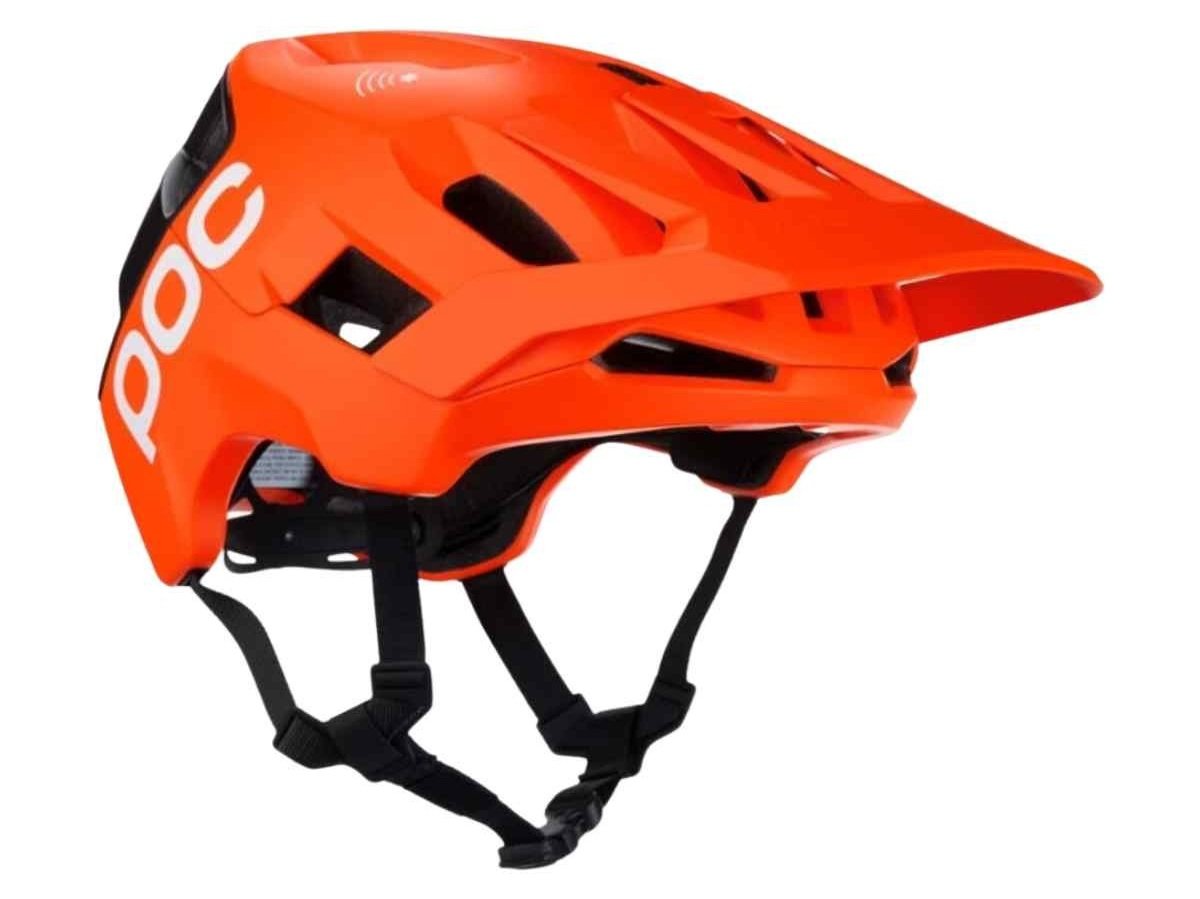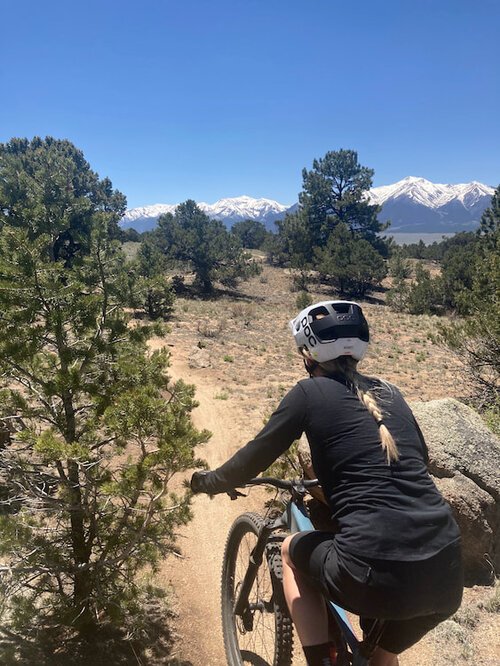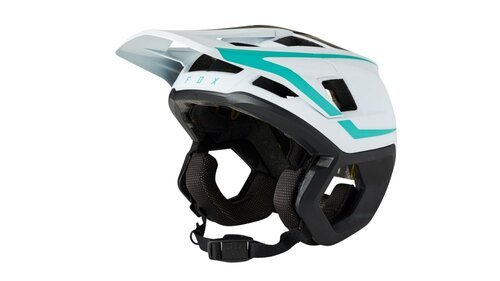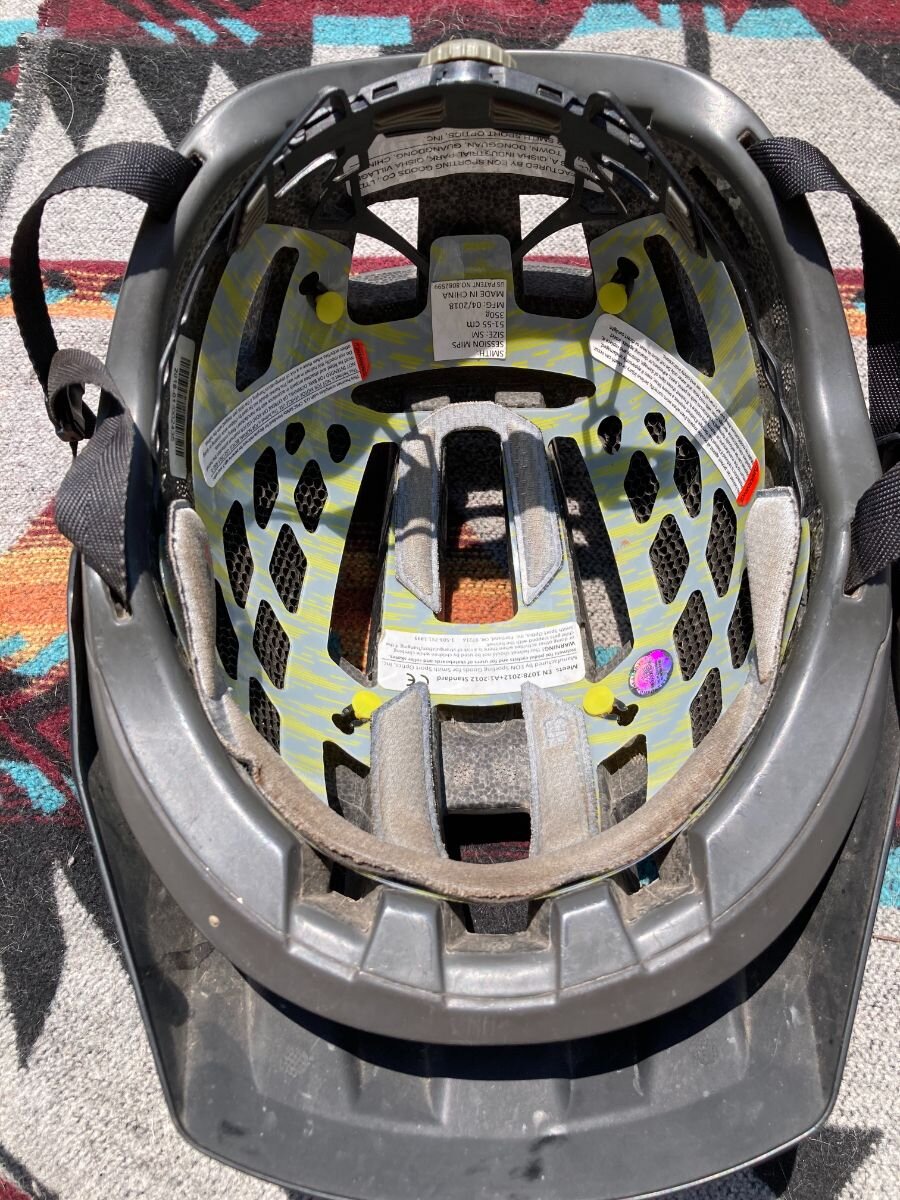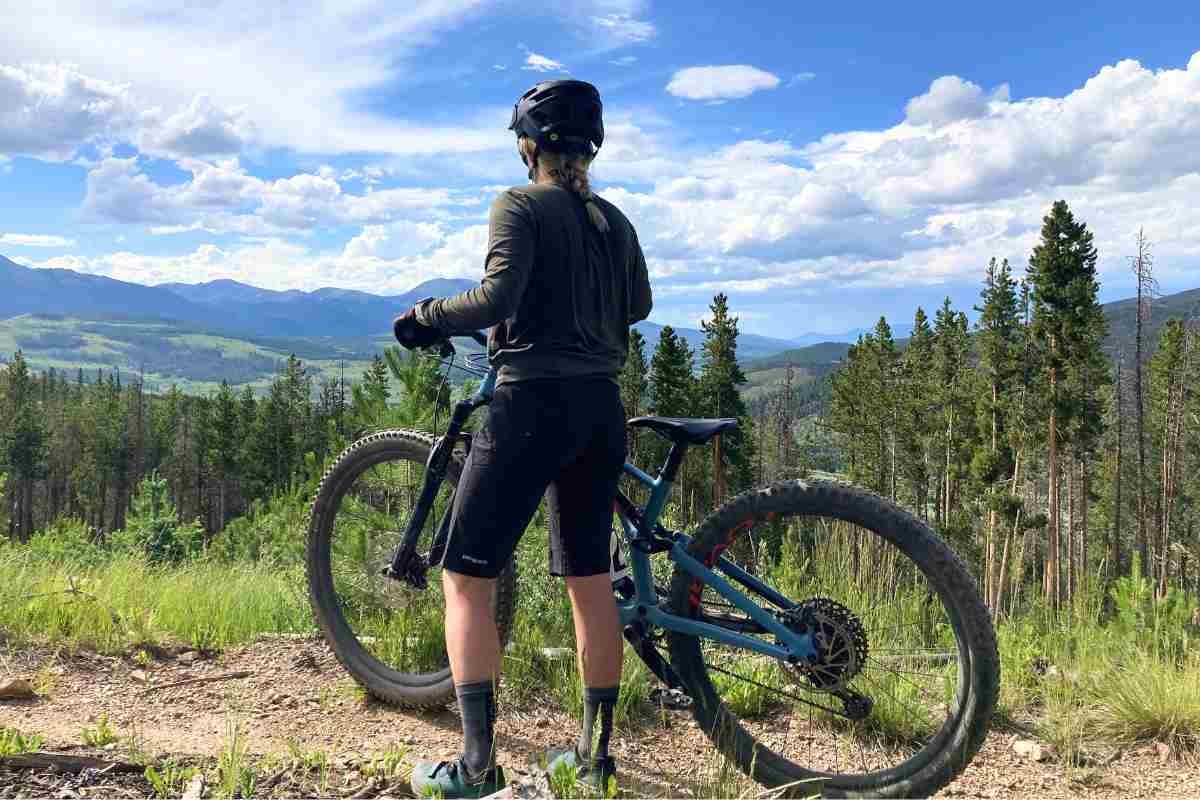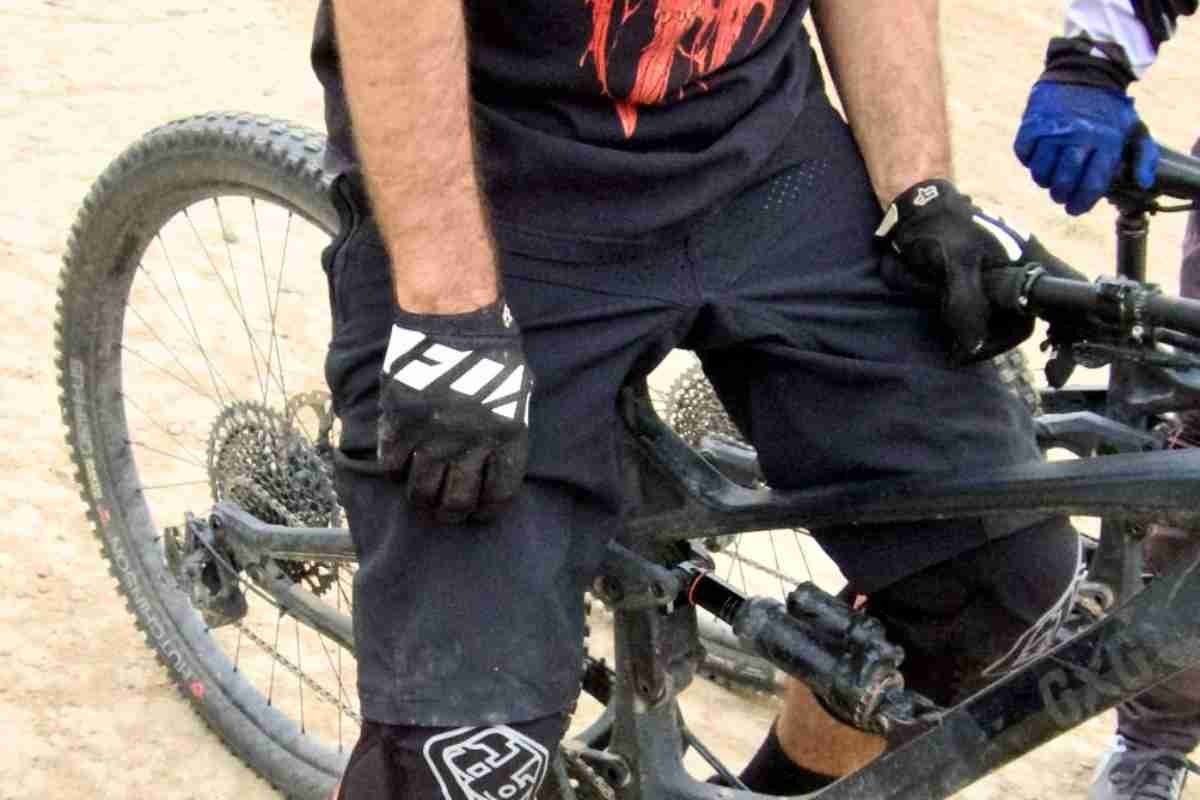Best Mountain Biking Helmets of 2023
The Top-Rated MTB Helmets for All Abilities and Budgets
September 13th, 2023
Helmets: one of the definite must-haves of the mountain bike world. If you spend any time cruising trails on two wheels, having an MTB helmet that offers top-notch noggin protection and a comfortable fit is essential.
We researched over 50 mountain bike helmets. We looked first for the best safety components and impact protection systems, referencing Virginia Tech Helmet Lab's trusted bike helmet safety ratings.
With bike helmets, there can be a good deal of technology to sift through when picking the right helmet for you. We’re here to help you understand what features are mandatory in a good mountain bike helmet, which are just nice to have, and how to find the best MTB helmet for your budget and style of riding.
Our criteria also considered additional features, like venting and padding, based on our own experience and expert sources. Then we scoured customer and media reviews. From that research, we landed on a dozen top contenders. Then, we took to the trails ourselves, testing the most promising models to verify our findings. In the end, we landed on the best mountain biking helmets on the market today.
Looking for road bike helmets? See our guide to The Best Road and Commuter Bike Helmets
We create reader-supported, objective gear reviews independently selected by our editors. This story may contain affiliate links, which help fund our website. When you click on the links to purchase gear, we may get a commission, without costing you an extra cent. Thank you for supporting our work and mission of outdoor coverage for every body! Learn more.
Comparison Table
| MTB HELMET | TREELINE AWARD | VIRGINIA TECH SAFETY RATING | ROTATIONAL IMPACT PROTECTION | HELMET STYLE | VISOR | VENTING | SIZING | ADJUSTABLE? | WEIGHT |
|---|---|---|---|---|---|---|---|---|---|
| Fox Racing Speedframe Pro | Best Overall Helmet Read why |
5 stars | MIPS | Trail / Enduro | Yes, adjustable | Ample | S - L | Yes | 380 g (M) |
| POC Kortal Race MIPS | Best Upgrade Helmet Read why |
Not on list | MIPS Integra | Trail / Enduro | Yes, adjustable | Good | XS/S - XL/XXL | Yes | 400 g (M/L) |
| Lazer Chiru MIPS | Best Budget Helmet Read why |
5 stars | MIPS | Trail | Yes, fixed | Good | S - L | Yes | 335 g |
| Giro Manifest Spherical | Most Comfortable Read why |
5 stars | MIPS Spherical | Trail | Yes, adjustable | Ample | S - L | Yes | 346 g (M) |
Interested in biking? Check out other Bike stories you may like:
The Best MTB Helmets
Best Overall MTB helmet:
Fox Speedframe Pro
Price: $190
Virginia Tech Rating: 5 stars
Rotational Impact Protection: MIPS
Helmet Style: trail/enduro
Visor: Yes, adjustable
Sizing: S-L
Weight: 380g (M)
Additional Features: Washable antimicrobial liner, goggle compatible
What we liked: excellent balance of protection, comfort, features, price, plenty of ventilation, comfortable in varied conditions and temperatures
What we didn’t like: could have more coverage and safety features
When it comes down to the ideal combination of protection, comfort, features, and price, we found that the Fox Speedframe Pro helmet stood out among the crowd. Despite its mid-range price, this mountain biking helmet offers top-of-the-line protection and excellent features.
For starters, the Speedframe Pro boasts a 5-star rating from Virginia Tech’s helmet testing program and lands near the very top of the list among other 5-star rated helmets (see our section below on safety ratings). The Speedframe Pro is constructed with dual-density EPS foam and includes a Mips liner for rotational impact protection. Other features include washable, anti-microbial inner padding; 19 vents for airflow; a magnetic Fidlock SNAP buckle on the strap; and an adjustable visor compatible with goggles.
FOX SPEEDFRAME PRO HELMET
The Fox Speedframe Pro helmet stood out among all the helmets we tested for its protection, comfort, features, and price. Photo by Tom Callaghan.
The Speedframe Pro fits true-to-size and accommodates most head shapes comfortably. A dial in the back helps to fine-tune the fit.
Overall, this helmet stood out as the most comfortable in our test. Ample ventilation paired with a good amount of coverage makes this helmet both cool enough for long climbs and protective enough to take on technical downhills. (If you’re headed to the bike park, however, we’d recommend opting for a full-face helmet.)
We spent time in this helmet in conditions as varied as cool spring rides in the woods to hot desert trails in the summer. When we wanted a comfortable helmet for just about any ride, the Fox Speedframe Pro is the one we reached for.
The Fox Speedframe Pro stood out as the most comfortable in our test with ample ventilation and enough protection for technical downhills. Photo by Tom Callaghan.
This helmet won an Editor’s Choice stamp of approval from Outdoor Gear Lab and was recommended by Bike Mag and Evo’s list of Best Bike Helmets. Customers agree, too: Dozens of 5-star reviews on Moosejaw, Fox Racing, Evo, and Backcountry praise the helmet for its comfort, ventilation, and excellent overall fit.
If you’re looking for a helmet with a bit more coverage and additional safety features, consider upgrading to the POC Kortal Mips. However, if you need a comfortable helmet for all-around trail riding, the Speedframe Pro is our top pick. For the price, you’d be hard-pressed to find another helmet that’s equally protective, comfortable, and feature-packed.
Best Upgrade MTB Helmet:
POC Kortal Race Mips
Price: $250
Virginia Tech Rating: Not on List (released in March 2021, after the study was done)
Rotational Impact Protection: MIPS Integra
Helmet Style: Trail/Enduro
Visor: Yes, adjustable
Sizing: XS/S-XL/XXL
Weight: 400g (M/L)
Additional Features: MIPS Integra, RECCO, NFC Medical ID Chip
What we liked: outstanding safety features, reinforced strength and durability, best coverage, MIPS technology that is more comfortable and less noticeable
What we didn’t like: deeper fit can get in the way of some sunglasses arms
If top-shelf safety features are what you’re looking for in a bike helmet, then POC has you covered. The Kortal Race Mips is one of the newest in POC’s line of mountain bike helmets, and it has a tall stack of safety features, building on the popularity of their classic POC Tectal Race Spin.
POC KORTAL RACE MIPS
The author showing the style and full coverage of the POC Kortal Race Mips.
The Kortal Race is constructed with what POC calls a unibody shell, meaning the helmet is molded as one single unit for better strength. It also features aramid bridges, which reinforce the strength of the helmet and enhance overall durability.
The Kortal Race has the best coverage of any of the helmets we tested, with the shell coming down close to the ears and over the bottom of the back of the skull.
For rotational impact protection, POC uses Mips Integra in this helmet. Unlike traditional Mips, where a thin plastic lining sits inside the helmet shell to allow for a small amount of rotational movement, Mips Integra takes the same idea and integrates it into the padding in the helmet. This technology makes for a rotational impact protection system in the helmet that is equally effective but more comfortable and less noticeable than the original Mips design.
Testing the POC Kortal Race Mips on trails in Colorado.
These features alone--the construction, coverage, and rotational impact protection system--make for a great mountain bike helmet and surpass the POC Tectal Race Spin for a top helmet.
But POC went the extra mile. The Kortal Race Mips also includes features like a RECCO reflector for search and rescue, an NFC Medical ID that stores personal medical information in case of an emergency, and meets standards for the Dutch e-bike safety certification.
The helmet also has an adjustable visor that’s compatible with goggles and, notably, is designed to snap off in the event of a crash to help prevent additional injuries. On top of all this extra protection, the Kortal Race Mips has 17 vent channels to maximize airflow.
When testing the Kortal Race Mips helmet on sun-soaked desert trails, we found it very breezy and comfortable, despite its burly construction. The Kortal Race fits true to size but has a deeper fit than any of the other helmets in our test. While this adds extra protection, we did find the helmet interfered with some sunglass arms.
The new MIPS Integra on the Kortal Race.
The helmet harness system allows for adjustment. Features like RECCO and Medical ID add to the safety features of this helmet.
The Kortal Race has racked up several 5-star reviews from customers on Backcountry, POC, and other sites, with many customers mentioning both the excellent safety features and overall quality of the helmet. Outdoor Gear Lab gave the Kortal Race a Top Pick award.
We agree with all the expert and everyday users: Despite the long-running popularity of their POC Tectal Race Spin, if you’re in the market for a half-shell helmet with outstanding safety features, we think POC’s new Kortal Race Mips is a worthy upgrade well worth the extra money.
Best Budget MTB Helmet:
Lazer Chiru Mips
Price: $70
Virginia Tech Rating: 5 stars
Rotational Impact Protection: MIPS
Helmet Style: trail
Visor: Yes, fixed
Sizing: S-L
Weight: 350g (S)
What we liked: bang for the buck offering safety features found in more expensive helmets, surprisingly comfortable for the budget helmet category
What we didn’t like: visor is not adjustable, coverage not quite as good as other helmets we tested
As technology advances and bike helmet features become ever more abundant, the price can easily reach top dollar. The good news is you don’t have to spend that much to get a trail helmet with the most necessary protection. We like the Lazer Chiru Mips for an excellent budget helmet that rings up at a fraction of the cost of most of the other helmets in our test. This half-shell helmet is constructed with EPS foam and includes a Mips liner for rotational impact protection. The Chiru also received a 5-star safety rating from Virginia Tech.
LAZER CHIRU MIPS
Testing the Chiru MTB helmet on the trails of Colorado. Photo by Tom Callaghan.
The Chiru fits true to size and has a harness and dial in the back for fit customization. While it doesn’t boast the hardly-noticeable feel of our overall winner, the Fox Speedframe Pro, we were impressed with the overall comfort of this trail helmet.
The Lazer Chiru has good coverage to the lower part of the skull. Photo by Tom Callaghan.
We didn’t encounter any pressure points from the harness tightening system and found the Chiru comfortable and secure on rides both short and long. This level of comfort is impressive given that it is a budget helmet.
With good coverage extending to the lower part of the skull, the Chiru is up for both cross-country and trail riding. (The coverage on the Chiru is surprisingly good for the price, though it does not quite match that of the Fox Speedframe Pro or our best-coverage helmet, the POC Kortal Race.)
With 15 air vents throughout the trail helmet, it kept our heads cool on sunny, 80-degree rides in the desert. The visor on the Chiru does an excellent job of blocking sun rays, but it is not adjustable.
The Lazer Chiru is an impressive budget helmet at a fraction of the cost of other helmets. Photo by Tom Callaghan.
Gear Junkie awarded the Chiru their Best Budget award, and several 5-star customer reviews on Amazon note the comfort, fit, and functional visor.
We agree with customers and other experts: This is a quality trail helmet with good coverage and protection that won’t hurt your wallet. You can spend more money to get additional features, like adjustable visors, magnetic buckles, or more vents. But ultimately, if budget is a top priority, opt for the Chiru for comfort and protection - and a very reasonable price.
MOST COMFORTABLE:
GIRO MANIFEST SPHERICAL
Price: $260
Virginia Tech Rating: 5 stars
Rotational Impact Protection: MIPS Spherical
Helmet Style: Trail
Visor: Yes, somewhat adjustable
Sizing: S-L
Weight: 346g (M)
Additional Features: Spherical Technology for impact protection; antimicrobial padding
What we liked: extreme comfort, lightweight, perfectly snug, great ventilation, lots of safety features, no pinching, works with lots of different pairs of sunglasses
What we didn’t like: price,
Safety is a given for us when we review bike helmets. If it doesn’t protect you, why bother strapping the thing to your head? While most top-end, brand name helmets are meeting those safety standards, not all helmets are created equal. With the Manifest Spherical, Giro delivers safety in spades, but what they also nail is comfort. Of all the helmets we tested for this review, none were as comfortable as the Manifest. It’s light, fits perfectly snug, and has great ventilation. Plus, it’s got a blend of unique and proven safety technologies that make this helmet a home run.
GIRO MANIFEST SPHERICAL
The Giro Manifest Spherical helmet feels incredibly light and perfectly snug. It worked seamlessly with multiple pairs of sunglasses and never pinched near my temples or anywhere else.
Like all of our winners in this review, the Manifest has Multi-directional Impact Protection System (MIPS) integrated into the shell, which helps to protect against injury from rotational impacts. The Manifest also has what Giro calls Spherical technology—something the brand developed alongside Bell.
Essentially, the helmet is constructed with two different liners which operate somewhat like a ball-and-socket joint, according to Giro’s website. It also allows them to add different layers of dual-density foam within the helmet to protect against different types of impact. Virginia Tech gave this helmet 5 stars for safety. So yes, the safety features in this helmet are great, and one of the top reasons to purchase it. Fortunately, we didn’t have to test that feature in the field.
The vents on the Giro Manifest Spherical are generous and great on hot days.
What we did notice when we were in the saddle is the supreme comfort of this helmet. From the minute I first put it on to test, it felt incredibly light and perfectly snug. It worked seamlessly with multiple pairs of sunglasses and never pinched near my temples or anywhere else.
The vents are generous for warm days with lots of pedaling, and the fidlock buckle is simple to use. So far, we’ve tested this helmet on a couple different spring rides in Colorado and the comfort is, hands down, what impressed the most. We plan to test the helmet more thoroughly throughout the summer and in a wider range of conditions, and we’ll update this review with additional testing notes once we have them.
The Manifest Spherical is certainly not cheap, but we believe you get what you pay for. And while it’s at the upper end for price, there are many other helmets (like the Smith Forefront) that top out with a similar price tag. Other media reviews back up our findings here, with Outdoor Gear Lab giving it an editor’s choice award for a few years now (since Giro introduced the helmet). If you want a helmet that provides top-of-the-line safety and unmatched comfort, splurge on this one.
Honorable Mentions
With so many mountain bike helmets on the market today, there are many good options to choose from. While these didn’t quite make the cut for our top awards, we still think they’re worth considering if you’re in the market for a quality half-shell helmet.
Smith Forefront 2
Price: $240
Virginia Tech Rating: 4 stars (for original forefront)
Rotational Impact Protection: MIPS
Helmet Style: trail/enduro
Visor: Yes, Adjustable
Sizing: S-L
Weight: 14 ounces (M)
Additional Features: Koroyd technology, adjustable, goggle-compatible visor, integrated sunglass holders
The Smith Forefront has been a highly popular helmet among mountain bikers since its debut a few seasons ago. The updated Smith Forefront 2 brings the same coverage, protection, and style that riders have come to love.
SMITH FOREFRONT 2
The Smith Forefront MTB helmet is among the most popular on the market. Photo by Tom Callaghan.
Along with industry-standard Mips protection, this helmet also features Koroyd technology throughout - a system of welded plastic tubes that collapse on impact to further absorb and divert impact on your skull.
Twenty air vents keep the helmet fairly cool, but the added Koroyd blocks some airflow, making the Forefront a little warmer than others in our test.
The Forefront 2 does feature an adjustable, goggle-compatible visor and an integrated sunglasses holder.
We wore this helmet on everything from cool sunrise rides to hot afternoon laps and found it to be an excellent choice for all sorts of trail riding. Overall, the Forefront 2 is a comfortable and protective helmet with good coverage (second only to the POC Kortal Race and similar to the Fox Speedframe Pro) and great style.
Fox Dropframe Pro
Price: $200
Virginia Tech Rating: 5 stars (top of the list)
Rotational Impact Protection: MIPS
Helmet Style: enduro
Visor: Yes, fixed
Sizing: S-L
Weight: 750g (M)
Additional Features: washable antimicrobial liner, goggle compatible
The Fox Dropframe Pro helmet finds itself in limbo somewhere between a half-shell and full-face helmet. The design has more coverage than a typical open-face helmet, with protection that fully covers the back of the skull and protects around the ears as well.
FOX DROPFRAME PRO
The Fox Dropframe Pro helmet sits at the very top of Virginia Tech’s list for bike helmets and includes Mips protection to boot.
However, the Dropframe doesn’t have an adjustable fit, so getting size dialed can be a little trickier. But, if you’re looking for as much protection as you can get outside of a full-face helmet, the Dropframe is up for your gnarly trail rides.
FAQ
Why Mountain Bike Helmets are Important
Whether you’re road cycling or bombing dirt trails, you’ll rarely find a cyclist or mountain biker sans helmet. A crash on a bike, especially at high speeds, can mean serious injury to the head and brain - and wearing a good bike helmet can significantly decrease this risk.
It’s essential to have a biking-specific helmet since these are designed specifically to absorb the type of impact that could happen from a bike crash (so your climbing helmet should stay in the gear garage when you’re out for a ride). From your road bike commute to downhill mountain biking, you should be donning a helmet anytime you hop on two wheels.
A study on bike helmets and head injury published in the International Journal of Epidemiology found that “helmet use is associated with odds reductions of 51% for head injury, 69% for serious head injury, 33% for face injury, and 65% for fatal head injury.”
While wearing a helmet (or any other protective gear, for that matter) cannot eliminate your risk of injury, it significantly reduces it.
As far as mountain biking goes, you’ll rarely find a rider-from cross-country to downhill-out on the trails without one, and for a very good reason.
An easy to adjust helmet harness adjustment ensures a good fit, which improves the chances that the helmet can do its job. This POC Helmet, our upgrade winner, also comes with RECCO.
A helmet harness system is designed for safety.
What is the safest mountain bike helmet?
Any bicycle helmet is better than none at all, though ones made specifically for mountain biking can offer additional coverage in the back and sides of the head than a road helmet or commuter helmet.
We cross-referenced all of our helmets with the Virginia Tech Helmet Lab's safety study-- an independent test of many of the leading bike helmets on the market, which rates helmets for safety, rewarding the best ones with 5-stars. We considered this safety technology (see section below) when selecting the helmets for our test.
Ultimately, there are dozens of top-notch helmets on the market today in regards to general protection. Some modern helmets come with additional features like RECCO and medical ID chips in case of an emergency.
Whether or not the helmets in our review include these bonus features, they all meet Virginia Tech’s marks for top-of-the-line brain protection.
Remember: While helmets significantly reduce your risk of head injury, they are no replacement for awareness on the trails and knowing your own abilities. Remember to be conscious of other riders and recreationists on the trail, and know your limits as a rider.
NO-How NOT to store a helmet.
YES-How to store a helmet.
Should a Bicycle Helmet be Retired and Replaced after a Crash?
A good mountain bike helmet should last riders for several biking seasons, as long as it doesn’t get banged up. If you take a fall on your bike where your helmet is impacted, you’ll want to inspect it for damage and consider replacing it.
It’s time for a new helmet if there are one or more of the following:
One or more dents in the helmet
Cracks in the shell
The Mips liner has been damaged.
Take good care of your helmet by always keeping it upright when setting it down and storing it in an area where it won’t get dented or otherwise damaged.
Can I replace helmet components like the visor or padding if they get damaged?
f you’ve worn the padding or need a new visor, but the helmet body and shell are in good condition, many brands (like Giro, Fox, and Specialized, among others) offer replacement parts like this. It’s a lot more affordable and more sustainable than a whole new helmet! Just make sure the main safety components of the helmet are undamaged before ordering to ensure you don’t actually need a whole new helmet.
Aside from safety components, fit is crucial for a good mountain bike helmet. How a helmet fits your head changes from brand to brand, so what works for you may not be the best option for your friend. Photo by Tom Callaghan.
How to Choose a Mountain Bike Helmet
After considering safety components, choosing a helmet will come down to fit, features, and budget.
Does it fit your head?
Fit is crucial for a good mountain bike helmet, so be sure you’ve measured your head to get the right size when ordering online. Better yet, try on a few helmets to find a style or helmet manufacturer that best fits your head shape.
Does it provide enough coverage and ventilation for your style of riding and climate?
It’s also worth considering what type of trails you’ll be riding most often. Will you be doing lots of cross-country riding in warm temperatures? A helmet with optimal ventilation will be best suited for this. Do you spend most of your time trail riding in the woods with a lot of downhill? Consider extra coverage in your helmet over ventilation.
what is your budget?
You don’t have to spend hundreds of dollars to get a quality helmet that will protect you. That said, if you want extra features - like better venting, nicer padding, or a lightweight helmet- those will come at a cost. When comparing helmets in different price ranges, these features are primarily what you’re paying extra for. So when selecting a helmet, consider your budget versus which features you want. If budget is the top priority, then look to helmets that don’t have all the bells and whistles, and you’ll find a quality piece of gear that will keep you safe.
No matter how you plan to use your mountain bike, there’s a helmet out there for every budget and every rider.
Mountain Bike Helmets vs. Road Cycling Helmets
When it comes to overall safety features, a good half-shell mountain bike helmet (as opposed to a full-face helmet) should have the same major safety features as a good cycling helmet. In this way, the basic construction of road and mountain bike helmets are not too different.
The main differences between these types of helmets are style and features, not directly related to the helmet’s safety rating. In comparison, a road bike helmet generally won’t have visors and will aim for a more aerodynamic shape.
Mountain bike helmets typically will have visors and will put less of an emphasis on aerodynamics. Instead, they will put more focus on trail riding features, like visor adjustability and a spot to hold your sunglasses.
Related: Best Touring Bicycles (they make great commuter bikes, too!)
A traditional MIPS liner.
The new MIPS Integra liner.
Mountain Bike Helmet Safety Technology
There are specific technologies used in bike helmets that add additional protection for your skull and brain. All good bike helmets are constructed with EPS foam (expanded polystyrene). This EPS liner is often reinforced and then covered with a high-quality plastic outer shell.
Then, there are rotational impact protection systems that add important protection against brain damage in the event of a crash. The most used technology in the industry is Mips - an inner layer to the helmet that offers a low friction movement of 10-15 millimeters inside the helmet to reduce the effects of rotational impact on the brain. This safety feature has been scientifically proven to reduce the impact on the brain in crashes, and we believe it is crucial for a modern helmet to have.
Rotational impact protection systems are not included in all bike helmets, but every helmet in our review has this vital safety feature. For more information about the technology in a Mips helmet, see this section of our Best Ski Helmets guide and in our Best Road Bike and Commuter Bike Helmets guide. The technology is ubiquitous across helmets in multiple sports because of its safety features.
Mips vs WaveCel vs Koryd
Besides Mips, there are other safety features in helmets on the market today, including WaveCel and Koroyd. Koroyd adds extra protection against direct and angled impacts by absorbing some of the force of that impact. Since it’s not designed to protect against rotational force, Koroyd is often paired with Mips in a helmet.
WaveCel is another newer-to-market safety feature that absorbs both direct and rotational impacts.
There are no conclusive studies that prove that either WaveCel or Koryd systems are better than the other. Still, there is significant scientific evidence that they help to reduce injury to the brain in the event of a crash. So we don’t recommend one over the other but simply encourage bikers to find a mountain bike helmet that includes any of these important safety features.
The author testing the Lazer Chiru helmet. Photo by Tom Callaghan.
How We Researched and Tested
We spent hours researching over 50 mountain bike helmets on the market, looking for the best safety ratings and ideal features at a reasonable price point. We referenced Virginia Tech Helmet Lab ratings, looking for the ones with the highest safety standards. Then, we searched for the most popular and loved helmets by both outdoor media and everyday customers, which narrowed our search to about a dozen top contenders. From there, we took the helmets and our two wheels to the trails, testing for fit, comfort, breathability, and other features to land on the best mountain bike helmets on the market.
A good bike helmet has safety features as well as fit and ample air vents. Photo by Tom Callaghan.
What to look for in a MTB helmet
SAFETY FEATURES
The first and most important factor in your helmet is what safety features it includes. As we mentioned, we believe that any good mountain bike helmet should have quality, high-density foam paired with some form of rotational impact protection system (like Mips). See more on this in our Safety section.
FIT
For your helmet’s safety features to work, you should also ensure that the helmet fits well to do its job properly. (If you’re buying a helmet online, measuring your head should give you the info you need to pick the correct size.) A properly fitting bike helmet should be snug but not constricting on your head. You should be able to nod your head vigorously, and the helmet should stay put. The chin strap should be gently snug around your chin without causing discomfort for your neck or throat; if it’s too loose, it won’t do its job of keeping the helmet on your head correctly.
MTB helmets should feel comfortable for whatever conditions you ride.
VISORS
After considering safety components and a good fit, look to the features to find a good helmet. Most mountain bike helmets (and all of the ones in our review) have visors to block the sun and protect from branches and other debris on the trail. If you aren't sure, some MTB helmets offer a detachable visor.
AIR VENTS
Good air vents are also ideal for managing sweat on summer rides. And, of course, you want to ensure that your helmet is comfortable to wear for several hours at a time.
Weight
The weight of your mountain bike helmet matters, especially for days filled with lots of pedaling. How important weight is will depend a lot on your riding style and what else you prioritize in your helmet, including added features. A lighter helmet will be more comfortable to wear when you’re climbing and pedaling a lot.
Safety features
All of the helmets we reviewed and considered are tested by third parties, like Virginia Tech. While all of these helmets are made with good foam and shell materials, they all also have some sort of additional rotational impact protection, like MIPS. Any good mountain bike should have these safety features. Some helmets, however, have additional safety features that go above and beyond, like RECCO reflectors and medical ID chips. These features inevitably cost more, so consider whether these are worth it to you.
Compatibility with other gear
The primary thing to consider with a helmet when it comes to other gear is eyewear. Different helmets will have different fits, and some are even designed to work specifically with certain pairs of sunglasses. If you can try the helmet on with your sunglasses, that will ensure a comfortable fit. If you want to wear goggles with your helmet, ensure it’s compatible with that and try them on with the helmet if you can.
Accessory mounts
Many bike helmets have venting that’s also designed to store a pair of sunglasses for when they’re not on your face, without additional accessories. Other mounts to consider are typically not included with the helmet, like camera mounts, but if you plan to use one, check the helmet shell to ensure it has a mounting location that you like.
Buying advice
Think about your riding style
Consider what types of trails you ride most of the time and base your helmet choice off of that, especially if you want only one to do it all. If you spend most of your time pedaling and descending singletrack trails, a good all-around helmet is probably the ideal choice. If you’re an aggressive single track rider, consider a beefier helmet with added safety features. If you spend a lot of time in the bike park, a full-face helmet should be a priority. On the other hand, if you ride mellower trails mostly for fitness, then a lighter weight half shell helmet is probably ideal.
Check for safety certifications
Ensure that any helmet you’re considering has the proper safety certifications, like from the Consumer Product Safety Commission. In addition, you can check for testing ratings from third parties like Virginia Tech.
Consider additional features
Think about what extra features you want in a helmet. Some have adjustable visors, extra venting, and even additional safety features.
Consider the helmet's warranty
As with any piece of outdoor gear, it's good to consider the manufacturer warranty, but this is especially important with helmets. Check to see how long the warranty is, what it covers, and in particular whether it covers crash replacement, which can be very helpful.
Care and Maintenance
Always store your helmet in a safe place, ideally that’s dry and out of direct sunlight. You should store your helmet upright (like it would sit on your head) in order to prevent denting, cracking, and unnecessary wear and tear on the shell.
Cleaning and sanitizing:
1. Cleaning the exterior
When it comes to cleaning your bike helmet, it isn’t something that needs to happen too often. If the shell gets muddy or dirty, simply rinse it with water and allow it to air dry. Many helmets have washable padding that can be removed and cleaned easily. Some can go in the washer, but generally handwashing is gentler and better.
2. Cleaning the interior
Many helmets have washable padding that can be removed and cleaned easily. Some can go in the washer, but generally handwashing with a gentle soap and warm water is better. Be sure to rinse well and then let the pads air dry before placing them back in the helmet.
3. What happens if I don't thoroughly remove soap?
Not removing all the soap can degrade the material of the padding overtime. It can also be irritating when you sweat in your helmet and have soapy sweat dripping down your face.
4. Should I use disinfecting wipes or sprays?
In general, you should not need to use disinfecting wipes or sprays on your personal helmet. Many of these sprays can have harsh chemicals that will degrade helmet materials over time, decreasing the life of the helmet. Generally, these are only needed in settings when helmets are being rented out to different folks.
When to replace a helmet
1. What's the lifespan of a helmet?
MIPS suggests replacing your bike helmet every 3-5 years if you use it regularly. The materials used to make these helmets degrade overtime, but more importantly, your helmet is affected by the constant sun exposure and regular wear, even if you haven’t crashed with it.
2. Replace your helmet if it has been involved in a crash. Full stop.
If you’ve crashed in your bike helmet and hit your head in any way, replace it. Inspect it for any cracks or dents and if you find any, replace the helmet for sure. Even if you don’t find signs of damage, if you hit your head while wearing the helmet it’s best to replace it since there could be minor damage that can’t easily be seen.
3. What are signs of wear and tear?
Keep an eye on the shell of the helmet and look for dents or cracks. Make sure the inside foam is still intact, as well as the internal cage that secures the helmet to your head. Straps can also wear overtime, so look for frays or tears, and make sure the buckle and strap adjustments still function properly. If any of these systems don’t work properly or have noticeable damage, you should replace the helmet.
If you are unsure of whether your helmet is still usable, first try confirming with the manufacturer. If you have trouble with that, check with a local shop, ideally one that sells the brand of helmet you’re hoping to have checked out.
4. What if the fit changes?
If the fit of your helmet changes for whatever reason (like a haircut or other body changes) and becomes too loose or uncomfortably tight, you should replace it for one that fits properly.
The author Stasis Stockwell is a true mountain dweller.
About the Author: Why You Should Trust Us
A true mountain dweller, Stasia Stockwell feels far more at home on a high alpine ridge than a busy city street. She writes primarily in the outdoor and adventure travel realm, focusing on destination content and gear reviews that are intriguing and informative for newcomers and experts alike. She’s worked as a backpacking guide in southeast Alaska and written for BACKPACKER, REI Co-op Journal, and The Dyrt, along with her work for Treeline Review. She’s a lifelong skier, mountain biker, backpacker, and trail runner who’s passionate about lowering barriers to entry for outdoor sports.
Stasia has been mountain biking since she was a kid, having grown up riding on northern Utah’s cross country trails. She now spends her summers biking on trails around her home in Breckenridge, Colorado, every chance she gets. From short after-work loops to 100-mile rides through the Utah desert, if she’s on two wheels, she’s smiling.
Read more about her on her website on her author page.

